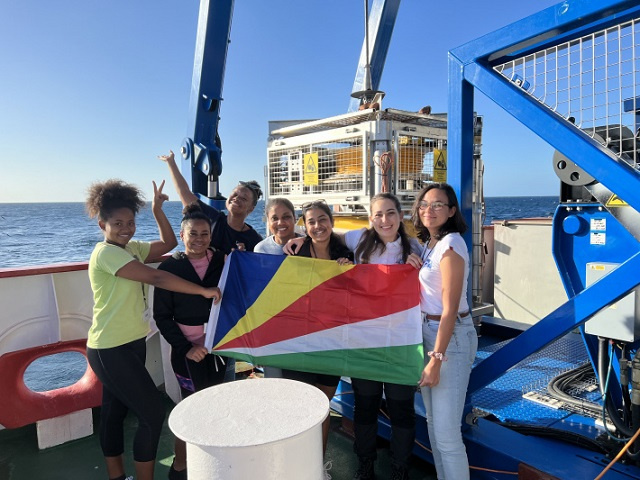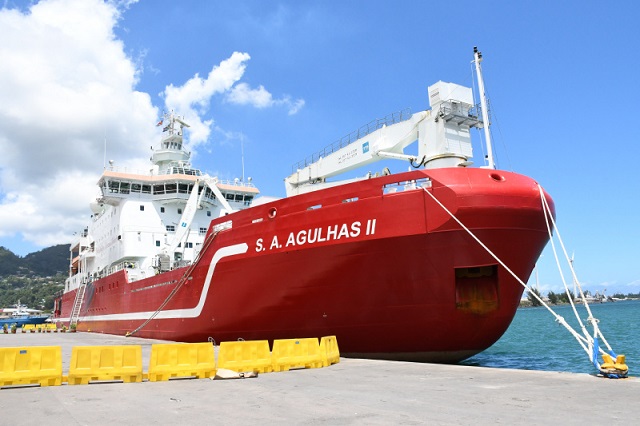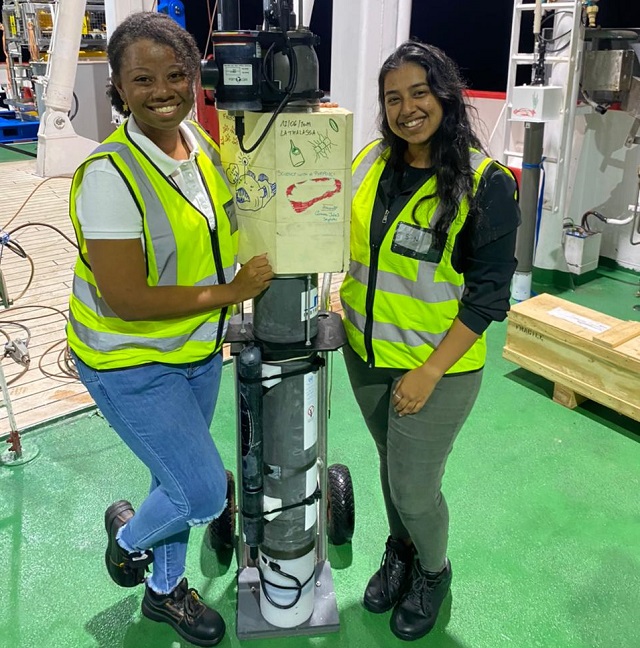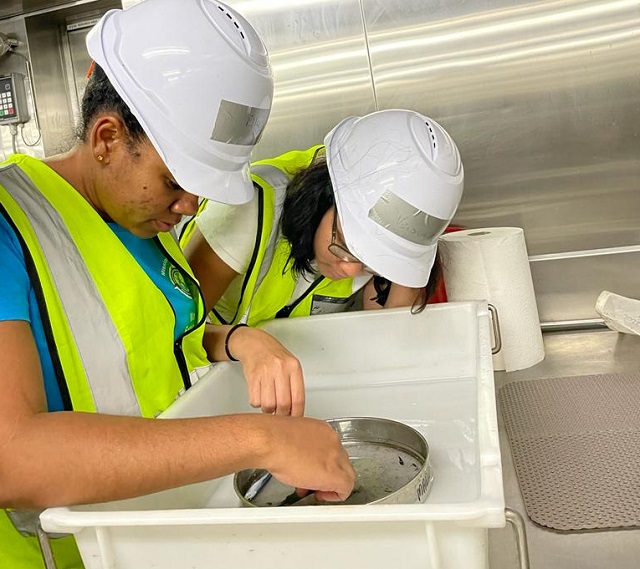Monaco Explorations: Seychelles' scientists recall extraordinary experience of expedition

The six Seychellois women who were onboard the vessel on the first leg from Reunion and spent one week on Aldabra before returning to Mahe. (Seychelles Nation)
(Seychelles News Agency) - What can be done to improve the roles and functions of Seychellois in future marine scientific expeditions was the subject of a meeting between government officials and participants, the Ministry of Fisheries and the Blue Economy said on Friday.
Minister Jean-Francois Ferrari met with the Seychellois participants of the second leg of the Monaco Explorations journey, which took place onboard the vessel named S. A. Agulhas II from November 2-17 to learn from their experiences and discuss future participation.
The second leg of the Monaco Explorations expedition brought a group of scientists of multi-disciplinary expertise to the Saya de Malha Bank within the Joint Management Area (JMA) co-managed by Seychelles and Mauritius. It was led by Gilles Bessero, the director of the Société des Explorations de Monaco.
 |
| The Monaco Explorations' research vessel 'S.A . Agulhas 2' started its journey in the Seychelles waters surrounding the Aldabra Atoll in October. (Seychelles Nation) Photo License: CC-BY |
The participants included 13 scientists from Seychelles and 11 from Mauritius and other French-speaking nationalities. Their objectives were to collect scientific information on still poorly known areas of the marine environment in the shallow areas of the Saya de Malha Bank. It also included providing a concise policy brief for institutional partners and policymakers in Seychelles and Mauritius.
One of the participants, Abel Sorry, principal research officer of the Department of Blue Economym said that "the Monaco expedition was a very well-planned expedition which taught, especially our young scientists onboard, new professional skills by engaging with the different experts from diverse fields of marine science."
He said participants had the opportunity to enhance their social skills as the group had to interact with different nationalities.
The Monaco Explorations' research vessel 'S.A . Agulhas 2' started its journey in the Seychelles waters surrounding the Aldabra Atoll in October, which included a series of research on and around this UNESCO World Heritage site.
On the first leg of the journey, a team of over 80 scientists from Monaco, France, Seychelles, Reunion, and Mauritius spent a week on the atoll and carried out scientific work on coral, mangroves, seabed, turtles, and much of the flora and fauna around and on Aldabra.
SNA met with four of the six Seychellois women who were onboard the vessel on the first leg from Reunion and spent one week on Aldabra before returning to Mahe, the main island.
 |
| Julie and Naiken with the decorated Argo float. (Saratha Naiken) Photo License: All Rights Reserved |
Magalie Rocamora told SNA that "We were participants in an oceanography course held by Sorbonne University. There were five Seychellois participants and five Mauritian participants integrated in the course. We did plankton sampling around Aldabra and other areas we went through while on the vessel. We had the opportunity to see the equipment they were using to analyse the plankton and take photos of the plankton etc. It was really interesting because we do not have all the equipment here in Seychelles."
Rocamora added that she comes from a social science background but is very interested in environmental science and the physical sciences.
Another participant in the exploration was Corianna Julie, a science officer at the Seychelles Islands Foundation (SIF).
"We all applied to be on the vessel and we literally did everything that they did on board; which was dealing with micro plankton work and microplastics as well and we were exposed to different researchers and their different projects and we were also heavily involved in bio-security. It was a very intensive 17 to 18 days where we worked on the ships," she said.
Julie said that the experience was something that was incomparable.
"It was amazing and I have always wanted to be on board and I honestly did not think I would get this opportunity from Seychelles. I felt very privileged to be part of the Seychelles' women's team to actually spearhead this in Seychelles and create a path for other young scientists," she added.
 |
| Banane and Nancy checking for microplastic from the manta net. (Veronique Banane) Photo License: All Rights Reserved |
Veronique Banane, a senior project officer at SIF told SNA it was great to work with regional scientists.
"A lot of the time, research from Seychelles is done from foreigners coming to Seychelles. It was extremely empowering to do work in our waters with regional scientists. It was also great as we were a group of women. It didn't use to be like this, it was mostly men and now we are having more women in science," she added.
For Saratha Naiken, who is studying for a bachelor of science in environmental science at the University of Seychelles, it was a personal milestone.
"I got to go to Aldabra for the first time and it was such a breathtaking experience. Towards the end, we managed to touch onto Aldabra for a few hours, and it was such a magical experience. I never thought in a million years that I would get to go there. We also got to meet the Prince [Albert] of Monaco and introduced him to the work that we do," she added.
The other two Seychellois female participants were Shemilla Jeremie, a conservation officer at the BCM Division in the Ministry of Environment and Ella Nancy, a student at the University of Seychelles.





